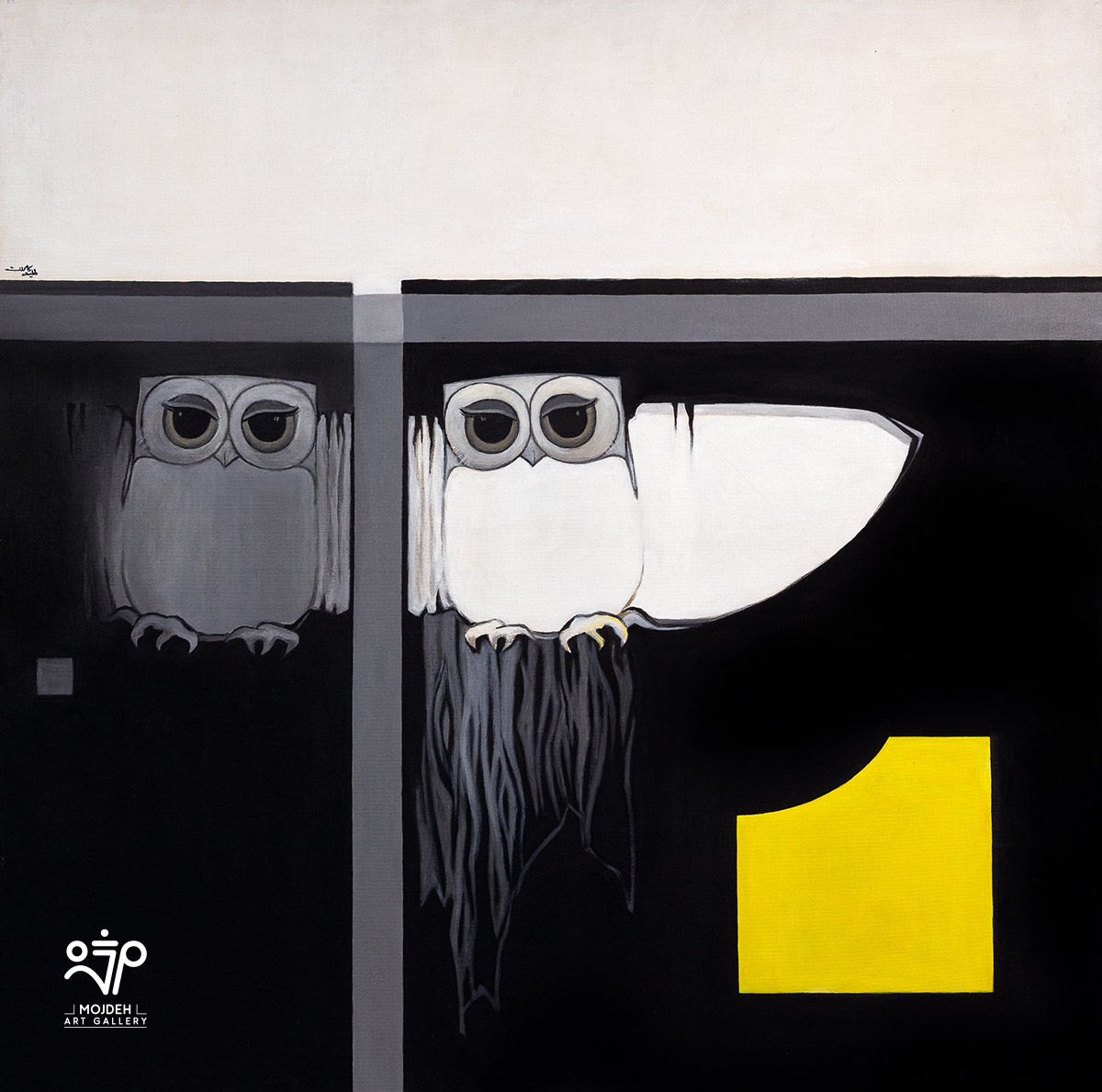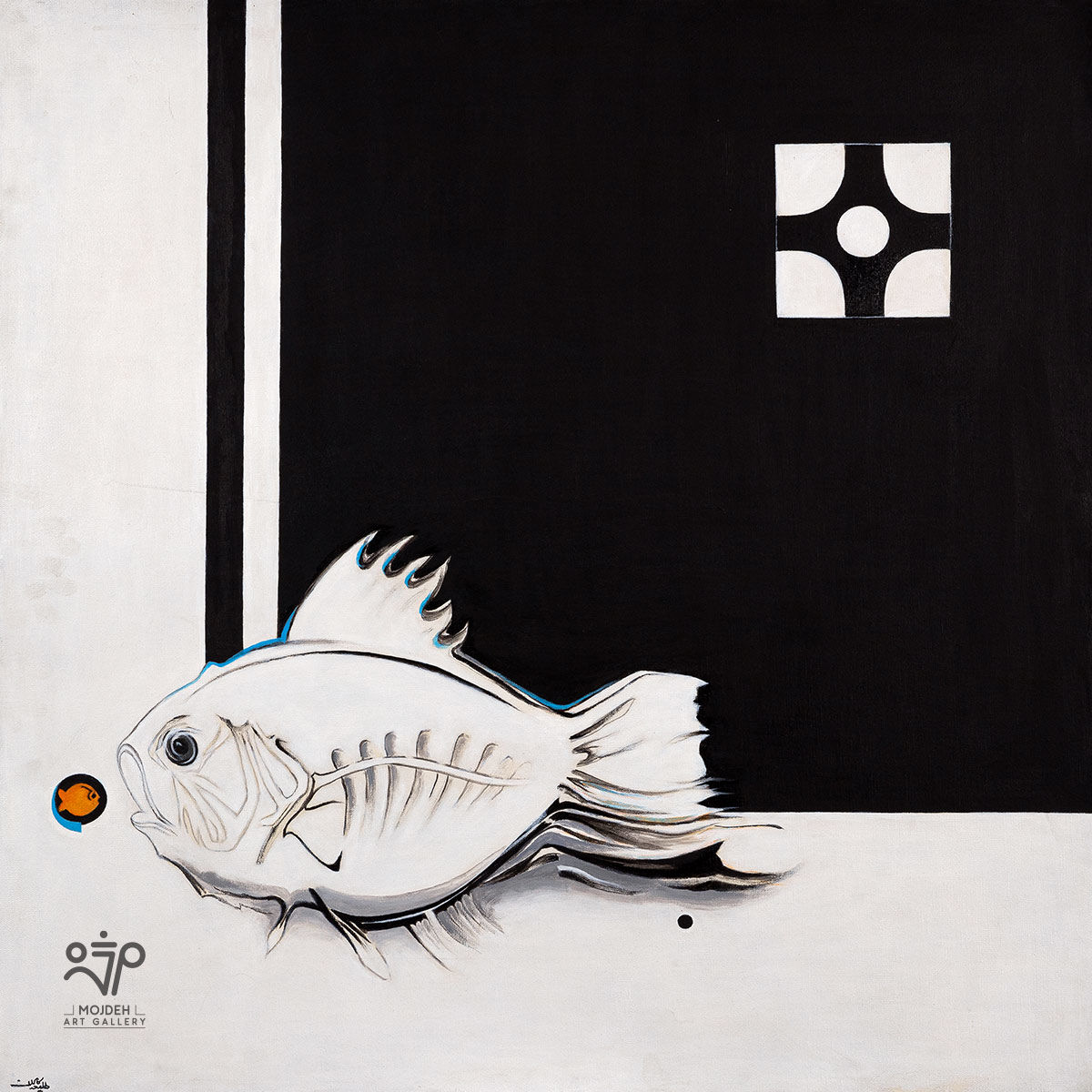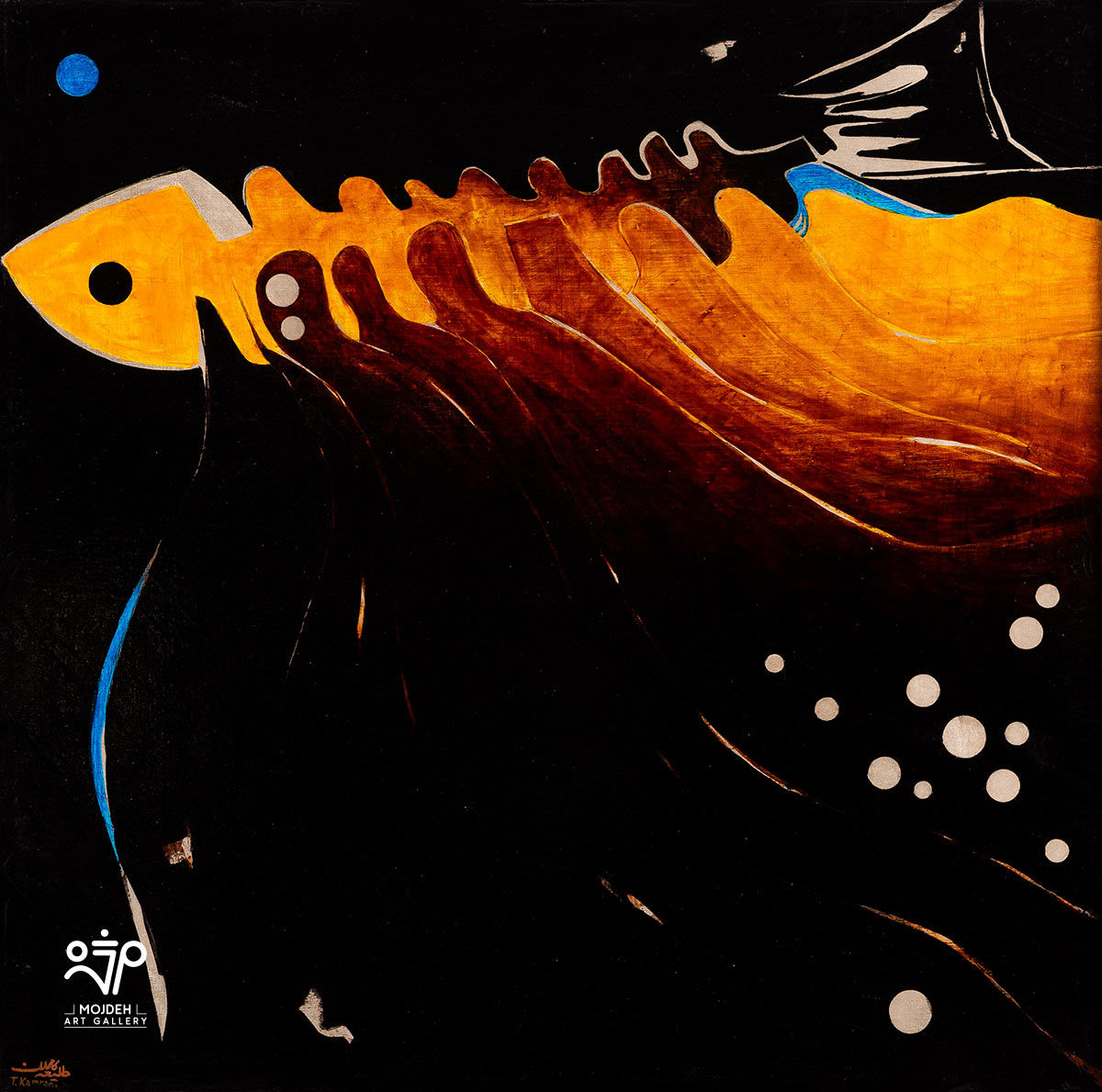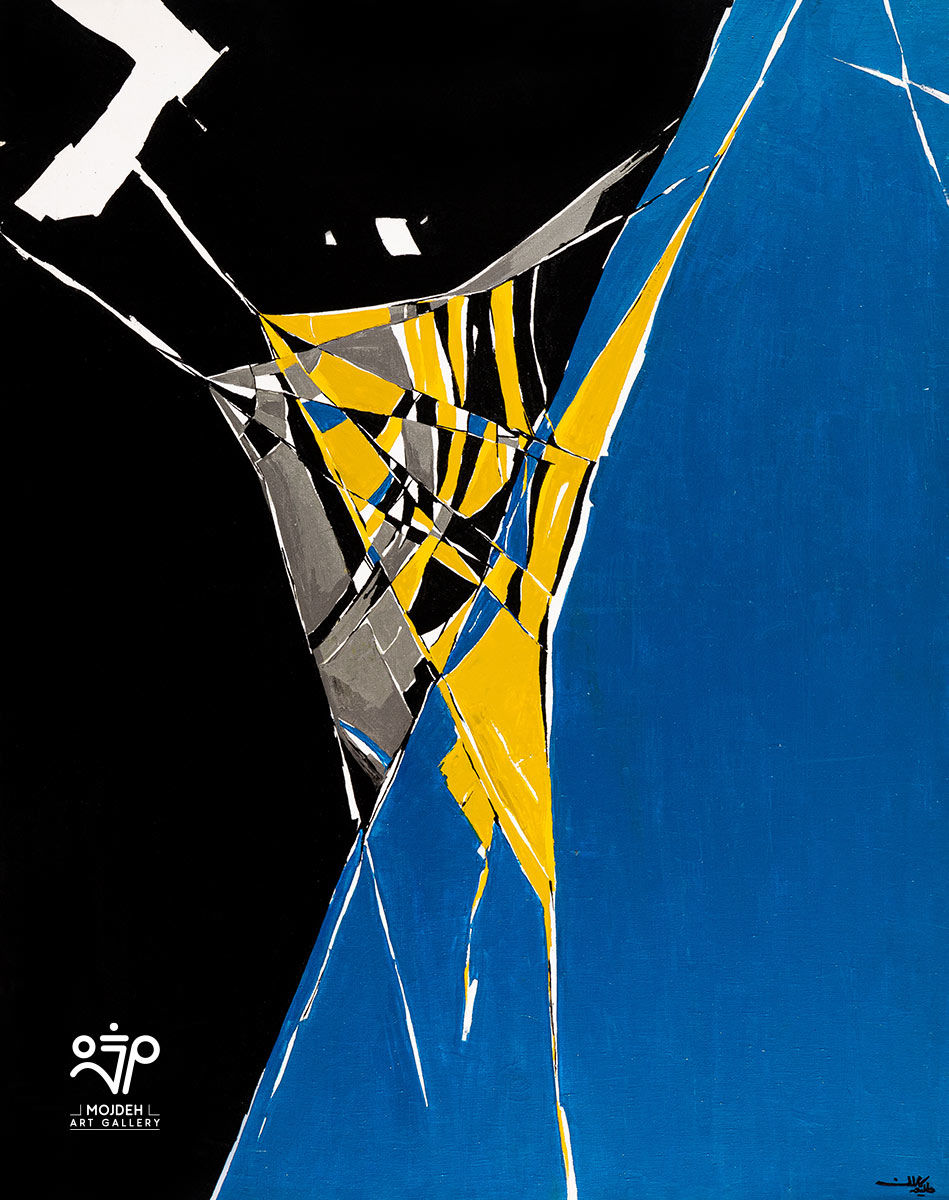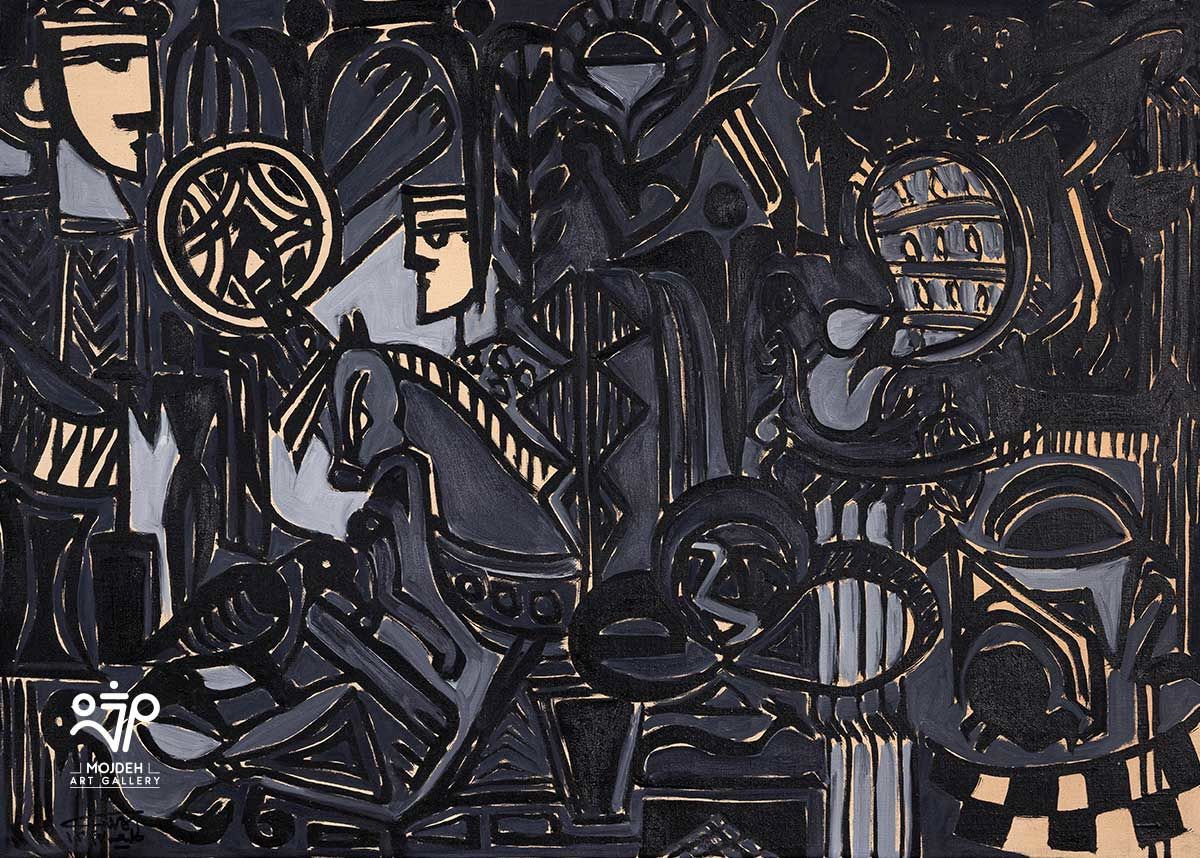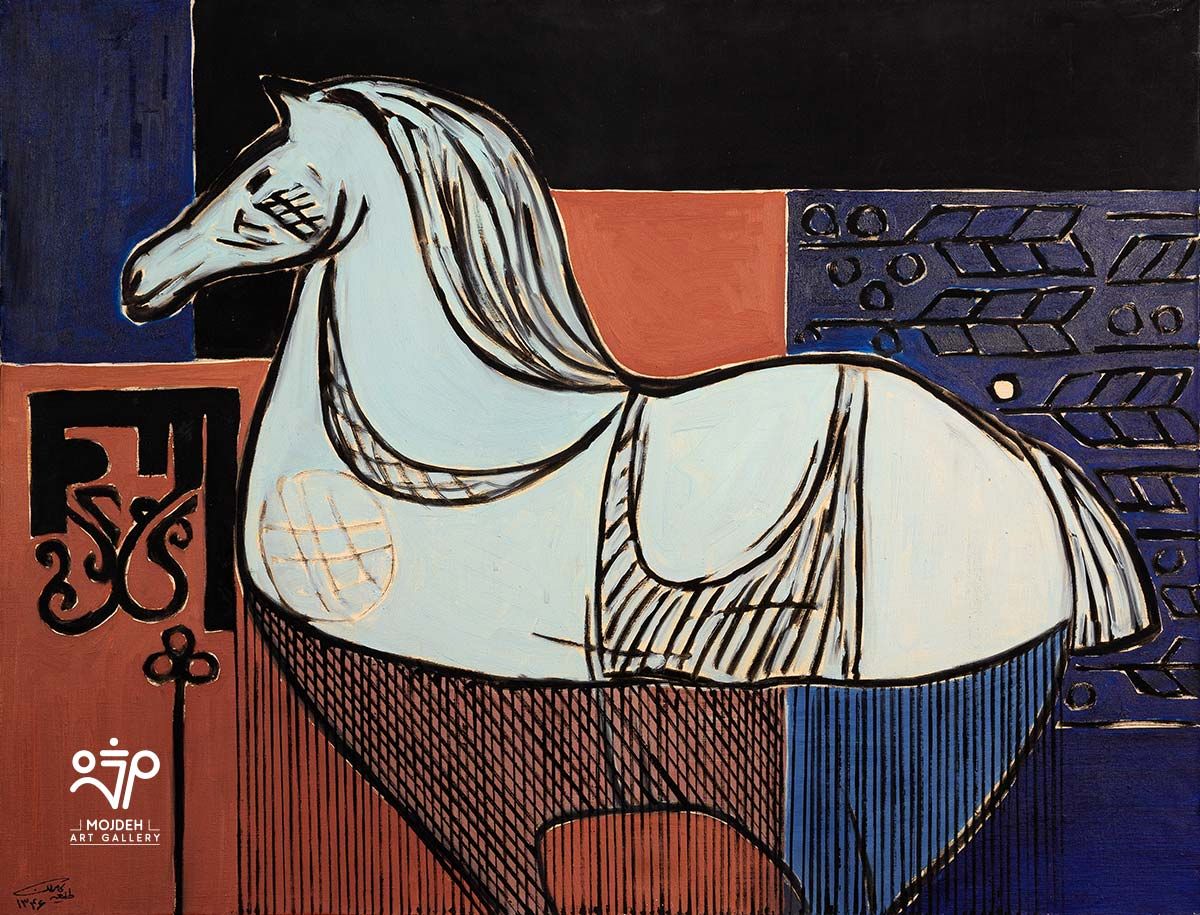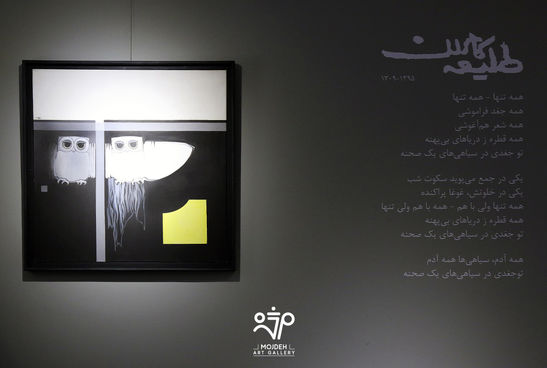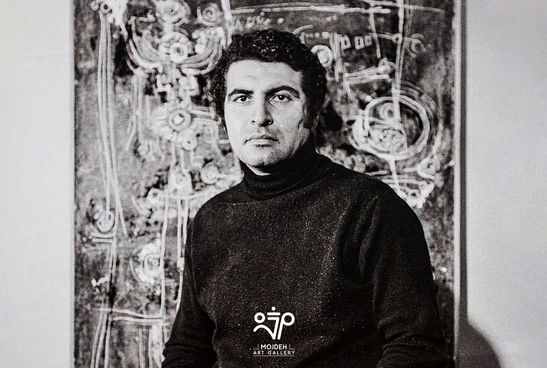Black Sun Series

Talieh Kamran's paintings, or more broadly, her nonverbal expressions, can be examined and described on various discursive levels. These levels fluctuate between the figurative and the abstract: in Kamran's visual discourse, we never encounter pure abstraction or pure figuration; rather, we find a gradation between these two levels. In paintings that lean more towards the abstract discourse, the dynamism of rhythm, the darkness of the color palette, the power of the brushstroke, and the intertwining of color and line become more apparent. This very point is one of our assumptions: in fact, the more we move from the figurative dimension in Kamran's works towards the abstract dimension, the more we encounter a realm that we, following the Bulgarian-French semiotician and linguist Julia Kristeva, call the semiotic realm, which is in contrast to the symbolic realm. It is worth mentioning that, apart from her visual arts, Talieh Kamran's poetry and auditory works also exhibit this intertwining yet distinguishable duality of realms. Let's dwell on this meaning: in Talieh Kamran's poetry, the more images intertwine and the more complex the metaphorical expressions become, the more difficult the rhythms become, and we encounter the semiotic realm. Conversely, the more figurative the expression becomes, the more we encounter the symbolic realm. As we previously mentioned, the signifying realms in Kamran's works are highly intertwined, but in painting, due to the visual signs that have various visual content from abstract to figurative, meaning is presented with a kind of delay. This delay is due to a level of engagement with objects and their interconnections, where the painter identifies abstract levels between these (real objects) and we only encounter the discursive level of this abstraction. In reality, the level of discourse (the imaginary worlds in which the painter has discovered the abstraction between objects in real life) is the very level that we strive to reach. It's important to note that when discussing the symbolic and semiotic levels, it's difficult to draw a distinct boundary between their perception within a single work. Instead, these two levels are completely intertwined, and each can transform into the other under specific discursive conditions. Perhaps this is why every visual or non-visual discourse has its own unique symbolic and semiotic realm.
Sohrab Ahmadi

